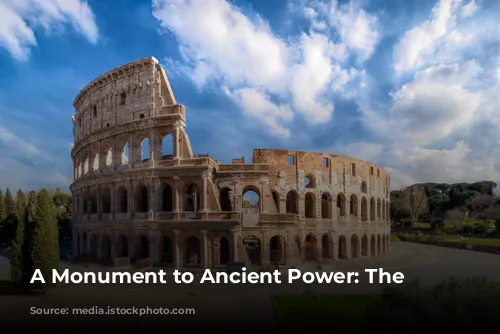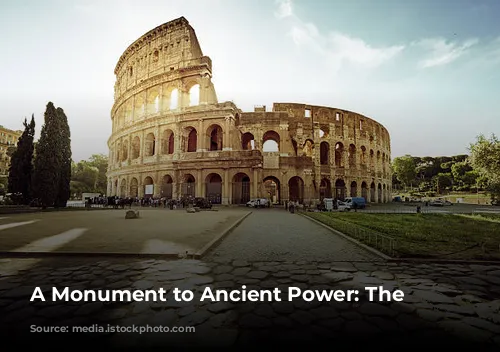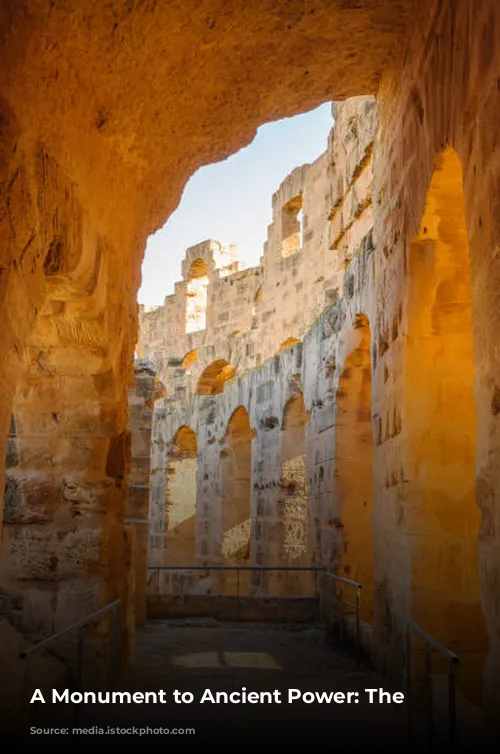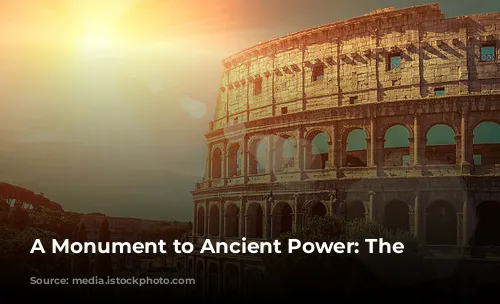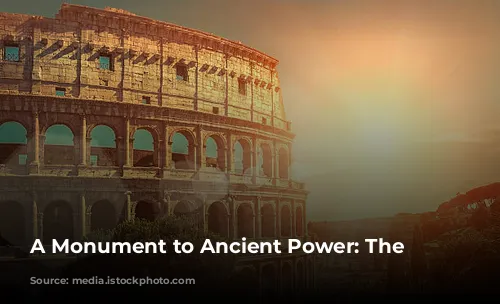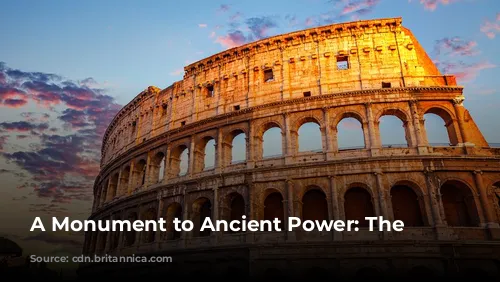The Colosseum, a remarkable testament to the ingenuity of ancient Rome, stands as one of the few largely intact structures from that era. Not only does it embody the architectural and engineering skills of the Romans, but it also serves as a vital source of revenue for the Italian government. In 2018 alone, the Colosseum, alongside the Roman Forum and Palatine Hill, attracted a staggering number of visitors, generating over $63.3 million (€53.8 million) – the highest revenue of any tourist attraction in Italy.
A Legacy of Glory and Neglect
The Colosseum’s journey through time is a tale of both magnificence and decay. After the fall of the Western Roman Empire, the magnificent arena fell into disrepair. During the 12th century, the Frangipane and Annibaldi families, powerful families of the time, converted the Colosseum into a fortress, a stark contrast to its former glory. Later, in the 15th century, Pope Alexander VI allowed the Colosseum to be used as a quarry, stripping it of its valuable materials. For over a thousand years, the Colosseum was neglected, a stark reminder of the impermanence of even the grandest empires. However, in the 1990s, state-funded restoration efforts began, marking a turning point in the Colosseum’s fate.
A Symbol of Imperial Might
The Colosseum’s construction was part of an imperial effort to revitalize Rome after the tumultuous “Year of the Four Emperors” in 69 CE. Emperor Vespasian, who commissioned the Colosseum’s construction, envisioned it as a grand entertainment venue, a symbol of Roman power and spectacle. The Colosseum was designed to host gladiatorial combat, animal hunts, and even mock naval battles, captivating the imaginations of Romans and showcasing their prowess. The arena was built using the spoils from Titus’s conquest of Jerusalem in 70 CE, a stark reminder of the brutal realities of the Roman Empire, and constructed using the labor of Jewish slaves from Judea.
An Architectural Masterpiece
Construction of the Colosseum began under Emperor Vespasian between 70 and 72 CE and was completed in 80 CE by his son, Titus. Emperor Domitian, Titus’ successor, added the fourth story to the structure in 82 CE. The Colosseum, an elliptical masterpiece, was built using stone, concrete, and tuff. Standing four stories tall at its highest point, it measures 620 by 513 feet (189 by 156 meters) and was capable of accommodating a staggering 50,000 spectators. The Colosseum’s design and construction were revolutionary for its time, showcasing Roman engineering prowess and artistic flair.
A Center of Entertainment and Symbolism
The Colosseum was not merely a structure of stone and mortar but a symbol of Roman power and entertainment. It was built on the grounds of Nero’s Golden House, a lavish palace complex that was drained and repurposed for the Colosseum, a move that was as symbolic as it was practical. Vespasian, whose origins were far from opulent, chose to replace Nero’s extravagant palace with a public amphitheater, a bold statement about his vision for Rome.
The Colosseum was designed to be a breathtaking spectacle, with a retractable awning, known as a velarium, that protected spectators from the sun. Hundreds of Roman sailors were responsible for manipulating the velarium, a testament to the scale of the undertaking. The Colosseum was the scene of thousands of events, from gladiatorial combat to man-versus-animal fights, and even elaborate mock naval battles.

A Legacy of Change and Restoration
Over time, the Colosseum’s fate changed dramatically. During medieval times, it was used as a church and later a fortress by powerful Roman families. The Colosseum faced damage from natural disasters, including lightning strikes and earthquakes, as well as from human neglect. The Colosseum’s grandeur faded as valuable materials were stripped away, and it was used as a quarry for over a thousand years. However, in the 19th century, the Colosseum’s preservation began in earnest, with notable efforts led by Pope Pius VIII. The 1990s saw the initiation of a major restoration project, bringing the Colosseum back to life. Today, the Colosseum remains one of Rome’s most significant tourist attractions, welcoming millions of visitors annually. The Colosseum’s history is a reminder that even the most magnificent structures are susceptible to the passage of time, yet its enduring legacy speaks to the enduring power of human ingenuity and the enduring fascination with ancient Rome.


